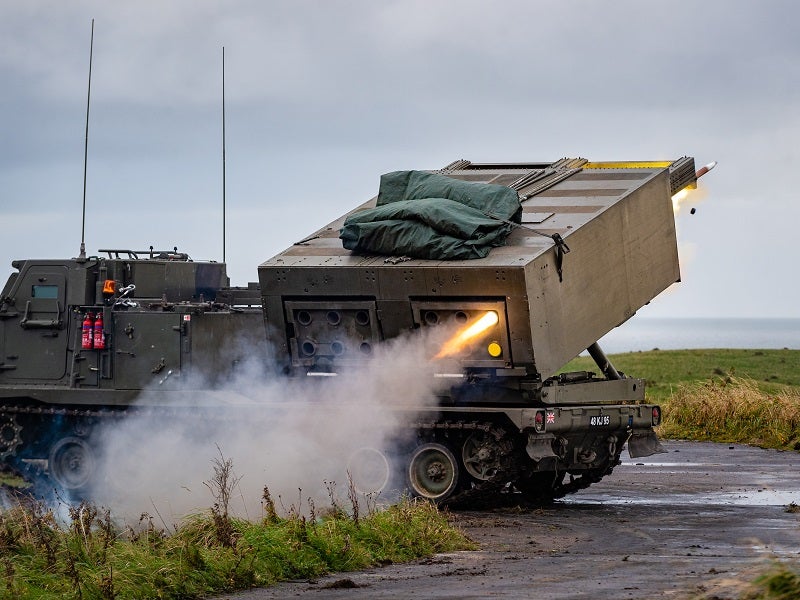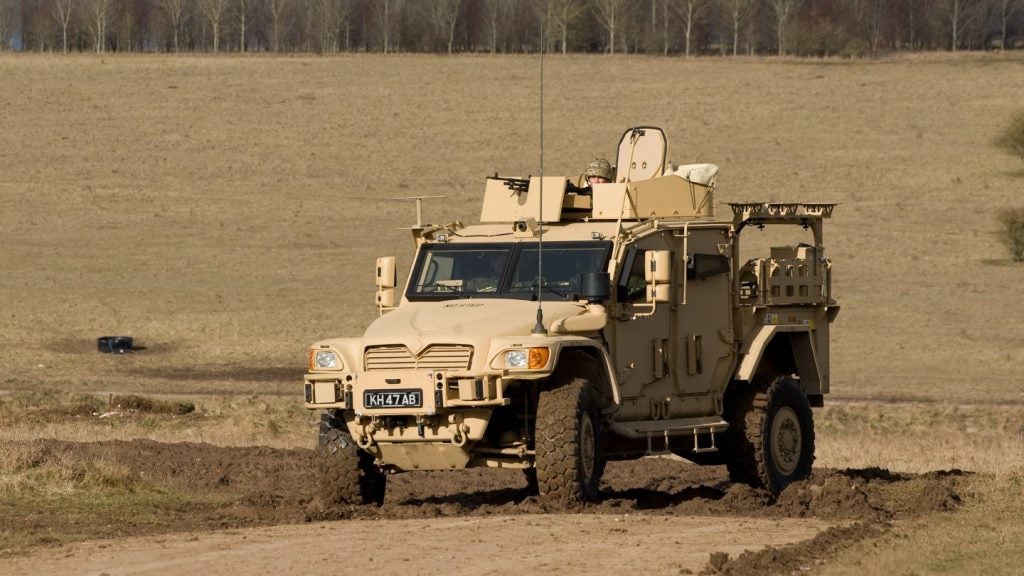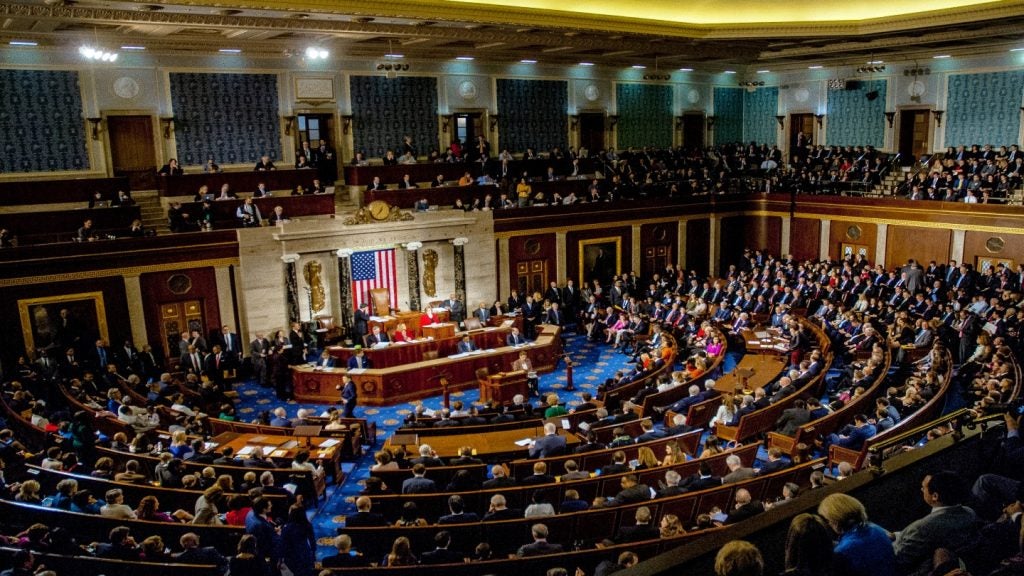
On the evening of 23 February this year, NATO watched the movements of Russian forces along both its own and Belarus’ border with Ukraine carefully, doubtless concern was rising at what appeared to be the final movements of a mobilisation to war.
Now, six months on from the fated 24 February invasion, the military costs to Ukraine and Russia have been huge, and the humanitarian cost to Ukraine monumental. Meanwhile, NATO member states, for the most part, have opted to support Ukraine with significant quantities of military equipment and financial backing, with Russia accusing the West of waging a proxy war against Moscow through its support of Kyiv.
As of 23 August, Ukraine’s Ministry of Foreign Affairs is claiming that Russia has suffered an estimated 45,550 fatalities among its military, a combined 1,249 fixed- and rotary-wing, crewed and uncrewed, aircraft destroyed, with nearly 200 cruise missiles intercepted. Claimed losses of land equipment include 1,921 tanks, 4,238 armoured personal carriers/infantry fighting vehicles, and nearly 5,000 other items including field artillery pieces, multiple-launch rocket systems, air defence platforms, and military trucks.
At sea, the largest loss to date was that of the Russian Navy’s guided missile cruiser Moskva, which was lost in the opening weeks of the war on 14 April, operating east of the highly contested Snake Island, which is now back in Ukrainian hands. Kyiv claims a further 14 naval platforms of various types have also been sunk by its forces.
While it is not possible to verify these claims, it is likely that they are inflated. However, the losses Russia has sustained during operations has left many of its units decimated. A US Department of Defense (DoD) official, speaking in early August, told reporters at the Pentagon that Russia had suffered “70 or 80,000 casualties” since 24 February.
How well do you really know your competitors?
Access the most comprehensive Company Profiles on the market, powered by GlobalData. Save hours of research. Gain competitive edge.

Thank you!
Your download email will arrive shortly
Not ready to buy yet? Download a free sample
We are confident about the unique quality of our Company Profiles. However, we want you to make the most beneficial decision for your business, so we offer a free sample that you can download by submitting the below form
By GlobalDataSee Also:
Given a basic three-to-one ratio of injured to fatality, Russia will likely have sustained about 25,000 combat fatalities, which is more than three times the numbers of those killed from across Russia’s combined services during the near-ten-year campaign of the Second Chechen War from 1999-2009.
To replace its combat losses Russia has reordered units, combining those deemed combat ineffective, while also recruiting additional personnel using higher-than-normal rates of pay and sign-up bonuses. Many of these newly created units are comprised of personnel from the same urban area or region, a practice not dissimilar to the British Army’s ‘Pals battalions’ of World War I.
The US Institute for the Study of War (ISW) reported in July that Russia’s new recruitment drive was taking place across the 85 regions that comprise the Russian Federation, drawing up battalions of 400 personnel, with recruits aged between 18-60 years old. Salaries for the recruits run from around $3,000 per month.
According to the ISW, if the recruitment drive saw the creation of 85 new battalions, the monthly cost to the Russian military would be $102m in salaries alone.
In addition, Russia has to reequip its forces, taking platforms held in reserve or stationed in other areas of the country, and is reintroducing to service its 1960s-era T-62 tanks. The high attrition rates of its armoured forces in the opening weeks of the war, after its failed lightning strike on Kyiv to decapitate its government, has continued in the months following as the war has evolved into a fight of direct and indirect long-range fires, with thousands of rounds of ammunitions expended on both sides each day.
Open-source intelligence analysts Oryx, which has been documenting equipment losses on both sides since the invasion began,estimates that Russia has sustained more than 5,000 military platforms destroyed, abandoned or captured. This includes nearly 1,000 tanks of various types, including more than 20 of the modern T-90A/M platform.
According to Oryx’s data, Russian air assets have also been significantly degraded, with more than 100 fixed- and rotary-wing combat aircraft destroyed, damaged, or captured, along with in excess of 100 uncrewed aerial vehicles, primarily of the Orlan-10 type. Oryx’s list of Russian naval losses tallies closely with that of Ukraine’s official figures, with eight vessels sunk (including the Moskva) and a further three damaged.
To provide context, Russian tank losses are likely around four times the number of Challenger 2 main battle tanks in the British Army’s inventory, with a total personnel casualty count approaching the entire listed strength of the regular British Army.
Ukrainian losses are much harder to estimate, given its need to suppress the military cost of the war due to national morale purposes and preventing Moscow from determining Kyiv’s remaining combat capability. Reports from UK media outlets, including Sky News, indicate that some units have suffered more than 80% attrition, with experienced soldiers lost in combat having to be replaced by inexperienced recruits.
Reports early on in the war indicated hundreds of casualties being sustained each day, with significant losses likely during operations in the south and east of the country as Russia moved to seize key urban areas. Over the course of the six months of high-intensity conflict, the number will run into the tens of thousands, potentially higher, given the reports that during the peak of the Russia’s Donbas offensive in June and July Ukrainian casualty rates were up to 1,000 per day.
In terms of equipment, Oryx puts losses across the land and air domains at over 1,500 platforms, of which 836 were destroyed and 605 captured, including the 239 tanks, with 123 destroyed and 104 captured by Russian forces. Again, were this the British Army its then numerically its entire Challenger 2 main battle tank fleet would have been lost in combat.
Oryx states that it data, both for Ukrainian losses as well as Russian, is compiled only where video or photographic evidence exists, and therefore likely represents an unknown fraction of total equipment losses during the war to date.
The civilian cost
Around a quarter of Ukraine’s civilian population is thought to have become refugees or been internally displaced (around six million each).
According to the latest civilian casualty figures published by the Office of the UN High Commissioner for Human Rights (OHCHR) on 22 August, from 24 February to 21 August, a total of 13,477 casualties had been recorded, with 5,587 killed and 7,891 injured. Of civilians killed, 2,161 were men, 1,490 women, 149 girls, 175 boys, as well as 38 children and 1,574 adults whose sex is not known.
Of the 7,891 injured, 1,603 were men, 1,190 women, 172 girls, and 236 boys, as well as 202 children and 4,487 adults whose sex is as yet unknown. The majority of civilian casualties have been recorded in the Donetsk and Luhansk regions where much of the fighting is taking place with 3,317 killed and 4,303 injured.
Civilian casualties in Ukraine from 24 February to 21 August 2022 (individual cases verified by OHCHR), per month
| Month | Civilians killed | Civilians injured |
| 24-28 February | 340 | 462 |
| March | 3,169 | 2,400 |
| April | 675 | 1,254 |
| May | 458 | 1,013 |
| June | 368 | 1,029 |
| July | 360 | 1,099 |
| 1-21 August | 207 | 634 |
According to a 15 August OHCHR report most of the civilian casualties recorded were caused by the use of explosive weapons with wide area effects, including shelling from heavy artillery, multiple launch rocket systems, missiles and air strikes. While the number are compiled from those confirmed by the OHCHR, it is expected that the actual figure is significantly higher, with reporting difficult in areas where fighting has been at its most intense.
In addition, Russian forces have been accused of deliberately targeting Ukrainian civilians, such as seen in the suspected war crimes committed on the civilians of Bucha in the opening stages of the war.
International support for Ukraine
For all the support being given to Ukraine by much of the international community, it should be noted that, while 141 countries voted earlier this year in favour of a UN resolution condemning Russia’s invasion, the governments and regimes of those that either abstained or voted against represent between 4.1 and 4.2bn people, or around 52% of a global population of around 7.9bn.
For the most part, western countries have sought to provide Ukraine with significant quantities of military aid and financial backing. On 19 August, the US committed another $775m in additional security assistance for Ukraine, the nineteenth drawdown of equipment from US DoD inventories for the country since August 2021.
In the latest package, systems provided included additional ammunition for the High Mobility Artillery Rocket Systems, also known as HIMARS; 16 105mm howitzers and 36,000 105mm artillery rounds; 15 ScanEagle uncrewed aerial systems; 40 MaxxPro mine resistant ambush protected (MRAP) vehicles with mine rollers; additional high-speed anti-radiation missiles; 50 armored High-Mobility Multipurpose Wheeled Vehicles (HMMWV); 1,500 tube-launched, optically-tracked, wire-guided missiles; 1,000 Javelin anti-armour missiles; 2,000 anti-armour rounds; and other mine clearing and demolition equipment, as well as night and thermal imaging optics, laser rangefinders, and secure tactical communications systems.
In total, the US has committed approximately $10.6bn in security assistance to Ukraine since the beginning of the current White House administration. Since 2014, the US has committed more than $12.6bn in security assistance to Ukraine.
The UK has also provided significant support to Ukraine, including the provision of the Next-Generation Light Anti-Tank Weapon, also known as NLAW and manufactured by Saab in Belfast, UK, to Kyiv as the opening salvos of the war were fired. The NLAW system gained celebrity among Ukrainian forces in the opening weeks and was used to conduct ambush attacks against columns of Russian armour that attempted to penetrate into Kyiv and remove President Volodymyr Zelenskyy from power.
Most recently, on 11 August the UK announced it would be sending additional Multiple Launch Rocket Systems (MLRS) to Ukraine, along with MLRS M31A1 munitions to enable strikes against targets from more than 80 miles away. A UK-led international training programme is also provided basic military training to Ukrainian forces at sites in the UK, with more than 2,300 personnel having been through the programme so far.

Total UK military and economic support to Ukraine this year totals more than £4bn, with additional equipment such as MRAP vehicles, AS90 155mm self-propelled artillery plus ammunition, as well as more than 5,000 NLAW and other personal military equipment. An international assistance fund has also been created to aid Ukraine in meetings the costs of equipment and training procurement, with more than $1bn committed by a range of countries so far.
Countries such as France, the Baltic states, Poland, the Czech Republic, and others in western Europe have also committed significant quantities of materiel and finances to Ukraine. Estonia for example has provided more than €250m in military aid and committed in August to the provision of a second field hospital to Ukraine along with additional mortars and anti-tank weaponry.
Private-sector enterprise such as SpaceX’s Starlink satellite communications constellation has also been provided to Ukraine in order provide civil and military connectivity, with companies also provided satellite imaging capabilities to aid Kyiv’s battlefield awareness. There is also the likelihood that NATO forces are providing information gleaned from intelligence, surveillance, and reconnaissance flights from RC-135 aircraft across operating inside Polish airspace to Kyiv.
NATO enlargement and consequences
A significant consequence of Russia’s invasion of Ukraine is that both Sweden and Finland opted to join NATO, the latter country sharing a 1,340km-long border with Russia, in a move that represents a departure from the neutral stance Stockholm and Helsinki maintained since the end of the World War II. Despite some resistance from NATO member Turkey, the two countries are expected to see their applications ratified by all NATO members before the end of the year, bringing two advanced militaries with specialisms in Arctic warfare under the Alliance’s umbrella.
In summary, six months of high intensity fighting in Ukraine has brought a kind of warfare back to the European continent that had long-since been thought consigned to history. While incursions such as Russia’s invasion of Georgia and annexation of the South Ossetia and Abkhazia regions in 2008, its 2014 annexation of the Crimean Peninsula from Ukraine, and hybrid warfare operations in the Donbas region, showed that Russia was embarking on a path to reestablish elements of its former Soviet Union empire, the prospect of a traditional, large-scale, land invasion of a neighbour as large as Ukraine was discounted, despite the evidence to the contrary.
As the war grinds on into the autumn and winter, front lines will become even more cemented as artillery and long-range fires become the primary form of combat between the two sides. Europe’s NATO members, reeling from the economic impact of the loss of Russian gas supplies due to political imperatives, will be watched closely by Washington for signs of wavering commitment as its populations enter fuel poverty during the coldest period of the war.
Six months on, the war is mainly about time, patience, and commitment. For Russia, will its full political and economic alignment with its allies in China, Iran, and elsewhere in the Middle East and Africa, offset the impact of the West’s sanctions? If it can do so, while maintaining access to the markets of countries that abstained in the UN vote (such as India) and gaining access to equipment from its stores, or provided by China, the war is likely to drag on through 2023 and beyond.
For NATO, it will endeavour to continue to supply financial and military equipment support to Ukraine and mobilise new industrial lines to keep pace with the attrition of combat. Politically, its members will have to attempt to offset the huge social impact of rising gas prices, double-digit inflation, and a cost-of-living crisis not seen for generations.
For Ukraine, its existential fight for existence as a viable state against Russia will continue to shape the country in the months ahead. With the hardening of front lines, the prospects of retaking areas such as the Donestk and Luhansk Oblasts, and southern cities such as Kherson, in the near-term are likely slim, while a political settlement brought about through a ceasefire is unlikely to see the Donbas, let alone Crimea, released from Russian control.
All signs point to a persistent war, with protagonist and antagonist leveraging the support of allies as the fracturing of the so-called ‘rules-based order’ and emergence of a new Great Power competition continues apace.








